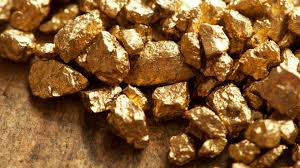Uncertainty over the global impact of U.S. economic and foreign policies under the Trump presidency and swings in the dollar linked to expected rises in U.S. interest rates will be the key drivers of gold prices in 2017.
“2017 is likely to be a year of uncertainty and gold thrives on uncertainty,” Barnabas Gan, commodity economist with Oversea-Chinese Banking Corp. (OCBC) in Singapore, told Bloomberg television on January 3.
Uncertainties over implementation of Brexit, and rising nationalism and “inward politics” before elections in France, the Netherlands and Germany, could boost gold as a safe-haven play for investors. Investors could turn to gold as a haven if already frayed trade relations between the U.S. and China deteriorate in coming months, analysts say.
“Domestic and foreign policy uncertainties may form the crux of a gold price resurrection in 2017,” said Lawrie Williams, gold market commentator for bullion broker Sharps Pixley.
A recent survey of 26 analysts by Bloomberg forecast a 13 percent rise in gold prices in 2017, to a median average of US$1,300 an ounce.
Gold closed 2016 up around 9 percent, its first annual gain in four years, and traded at US$1,166.17 an ounce on January 4.
DOLLAR SURGE?
Fluctuations in the dollar will also be a major driver for dollar-based bullion, with many analysts seeing potential further upside in the greenback due to expectations of two or three U.S. interest rate rises in 2017.
Higher interest rates make alternative investments more attractive than non-interest-bearing gold.
“There’s little doubt that dollar strength will be important for the gold price and the prospects of a trade war with China and the unwinding of some other key trade agreements, which Trump appears to wish to implement, could be destabilising for the greenback,” Williams said.
The dollar has gained against most major currencies in recent weeks, buoyed by a widely expected quarter-point rise in U.S. interest rates on December 14, as well as expectations of a pickup in U.S. economic growth. President-elect Donald Trump has proposed tax cuts and big infrastructure investments.
In the fourth quarter of 2016, expectations of the December rate hike, which was only the second rise in rates since the U.S. Federal Reserve cut borrowing costs to near-zero in 2008, dragged on gold prices.
Gold may gain from sentiment that the Fed will be dovish on monetary policy, perhaps being reluctant to drive up interest rates due to fears of the impact of a surging dollar.
Some analysts also see the possibility of rising inflation if prices surge ahead of interest rate rises.
For the UK jewellery trade, the pound’s value against the dollar will be a key focus for procurement of gold.
Further weakness in the pound against the dollar, triggered by uncertainties over implementation of Britain’s withdrawal from the EU, will make gold more expensive for UK jewellers and manufacturers.
Prompt re-stocking may be the best strategy in the face of risks that gold prices will rise in sterling terms in 2017, driven by bullion’s safe-haven appeal, and a likely further strengthening of the dollar against the pound due to expected U.S. rate rises and fears over Brexit.




4 comments